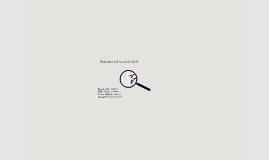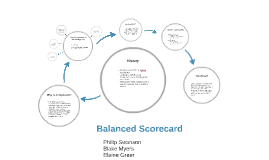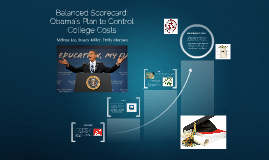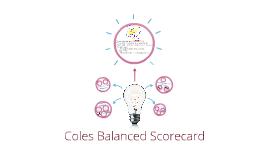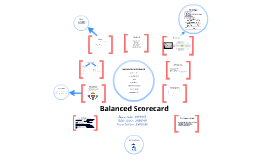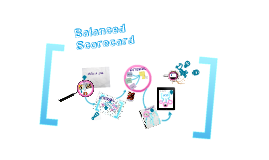Balanced Scorecard
Transcript: The Result Internal Business Process History An effective balanced scorecard will use all the information gathered from looking at the company from all perspectives and develop a proper measurement system to easily see how effective the company is at become better in all perspectives Intangible assets were accounting for more than 80% of industrial organizations' market value but no way to value it Attempts were made to incorporate these assets to the balance sheet, unsuccessfully Everyone needed a way to properly show value Introduced in 1992 by Kaplan and Norton Looking at only financial performance was proving to be inefficient Companies were searching for a way to measure their intangible assets After a company has integrated its balanced scorecard, the entire organization is able to contribute to the strategy laid out in the beginning. With identifiable goals each member can see what they can do to move the business forward Stakeholder Scorecard Covers customers, shareholders, and employees Does not say "how" to be better KPI Scorecard Internally focused Does not have anything to benefit the customers Four Perspectives of the Strategy Map Customer Learning and Growth This is the final perspective because it is how a company will react and make changes to the negatives brought to light by the previous perspectives. This piece completes the strategy map Why is it important? Philip Swanson Blake Myers Blaine Greer The Scorecard Balanced Scorecard Whether a company is looking for revenue growth or productivity, this perspective will show how to make the shareholders the most happy This perspective ties in the previous two by having a goal to build the franchise, increase customer value, achieve operational excellence, and become a good corporate citizen. Using this perspective companies will look for innovation to build the business rather than only cutting costs "Other" Scorecards 1. Financial 2. Customer 3. Internal Business Processes 4. Learning and Growth Through operational excellence, customer intimacy, and product leadership companies use this perspective to see how to better their relationships with their customers and market share Financial







